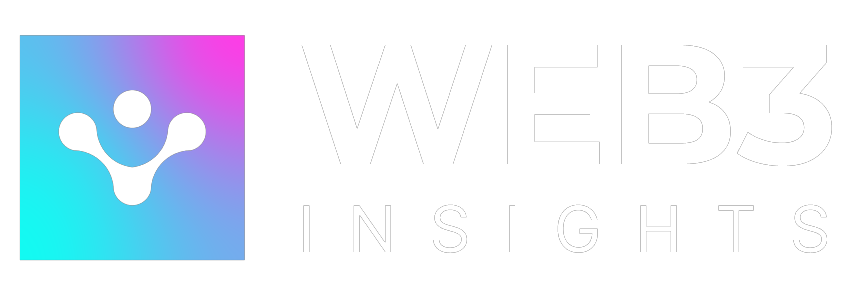Bitcoin on Solana is no longer just a concept, it’s a functioning layer of liquidity, DeFi participation, and real utility. Through protocols like Zeus Network and others, BTC is moving into Solana’s high-speed, low-cost environment. But it’s not the only blockchain welcoming Bitcoin. Ethereum has long been the first stop for wrapped BTC and has an established DeFi ecosystem that integrates it. So what’s the difference?
This article compares Bitcoin on Solana to Bitcoin on Ethereum; in terms of user experience, decentralization, speed, cost, ecosystem maturity, and developer activity. If you’re holding BTC and looking to put it to work, understanding how each chain handles Bitcoin can help you make smarter decisions.
The Basics: How BTC Gets to Each Chain
Let’s start with how Bitcoin shows up on these chains.
On Ethereum, Bitcoin is typically represented by wrapped BTC (wBTC). This tokenized version of BTC is backed 1:1 by real Bitcoin held by custodians like BitGo. It’s been around for a while and is supported by most major Ethereum DeFi platforms.
On Solana, Bitcoin shows up in multiple forms, but the most promising one is zBTC, created by protocols like Zeus Network. Unlike wBTC, zBTC is minted through a trustless system that doesn’t rely on centralized custodians. It’s backed by real BTC and verifiable in real-time.
So right from the start, we have a big difference: Ethereum relies on centralized custody, while Solana is moving toward trustless bridges.
Speed and Fees: A Clear Win for Bitcoin on Solana
Ethereum has had major congestion issues for years. Gas fees can spike into the tens or even hundreds of dollars during peak times. This makes even basic BTC swaps or lending operations expensive. Transactions often get stuck or require manual tweaking of gas settings to get through. For the average user, this can be frustrating and costly.
Solana, on the other hand, is fast. We’re talking sub-second finality and transaction fees that cost less than a penny. This makes a huge difference when you’re trying to move BTC between apps, provide liquidity, or stake in a vault. On Solana, the process feels instant, like swiping a card, rather than waiting for a slow confirmation on a legacy system.
So if you’re just looking at user experience, Bitcoin on Solana is significantly more usable for everyday activity.
Ecosystem and Integration: Ethereum Still Has the Depth
Ethereum’s been around longer and has the bigger DeFi ecosystem. Platforms like Aave, Uniswap, Curve, and Maker all support wBTC, and the liquidity pools are deep. That means Ethereum might still be your best bet if you’re doing high-volume trades or need access to a lot of capital.
Solana is catching up fast. Projects like MarginFi, Jupiter, Meteora, and Drift are building solid integrations for Bitcoin on Solana. The tools are improving, the liquidity is growing, and more developers are launching apps specifically with zBTC in mind. Plus, many Ethereum-native protocols are expanding to Solana or being reimagined for a faster, smoother user experience.
So while Ethereum wins on ecosystem size for now, Solana is closing that gap quickly with cleaner design and faster performance.
Security Models: Centralization vs Verifiability
The security model is where the biggest philosophical differences show up. wBTC on Ethereum depends on trusting a custodian (usually BitGo) to hold the actual Bitcoin. That model works fine most of the time, but it breaks the decentralization ethos that Bitcoin was built on.
zBTC and similar models on Solana use permissionless systems, decentralized storage, and real-time proof-of-reserves. With tools like ZeusScan, users can see exactly where the Bitcoin is and how it’s being held. There’s no guessing. No, trusting some company to do the right thing. Just facts on-chain.
If you’re a decentralization purist, Bitcoin on Solana wins here. It’s a better philosophical fit for BTC holders who care about transparency and trustlessness.
Composability and Developer Activity
Solana’s development environment is different from Ethereum’s, but developers are embracing it for its speed and flexibility. Solana allows for parallel transaction execution using its Sealevel runtime, which means apps can handle many more users at once without slowing down.
This is great news for protocols that want to use Bitcoin in real-time strategies. Developers can build lending loops, high-frequency trading bots, or even BTC-backed NFT mints without worrying about network lag or gas limits.
Ethereum still dominates when it comes to dev tooling and legacy documentation, but Solana’s developer base is growing fast. The pace of innovation is rapid, and Bitcoin on Solana is increasingly being used as a foundation for experimental apps.
Real Use Cases: How BTC Is Used on Each Chain
Let’s get practical. On Ethereum, BTC (via wBTC) is mostly used in traditional DeFi strategies. You’ll find it locked in Aave for borrowing stablecoins, staked in Curve pools for yield, or backing synthetic assets like DAI in MakerDAO. These use cases are established and high volume.
On Solana, zBTC is being used in a different, more nimble way. Traders use it on Jupiter for near-instant swaps. It’s deposited into liquidity pools on Meteora and Orca. Borrowers use it as collateral on MarginFi to access stablecoins or leverage other assets. It’s even starting to be used in blockchain games and NFT platforms as a payment option.
The use cases on Solana might not be as large in dollar value yet, but they’re more experimental and fast-moving. It’s where you go when you want to build or try something new.
Final Thoughts: Which Chain Is Better for Bitcoin?
If you value established apps, deep liquidity, and time-tested infrastructure, Bitcoin on Ethereum still holds the crown. But if you want a better user experience, lower fees, faster execution, and a commitment to decentralization, Bitcoin on Solana is looking more attractive every day.
You don’t have to choose just one. Bitcoin can now live in multiple ecosystems, and that’s the point of interoperability. The real question is: what do you want to do with your BTC?
If your answer is “not much, just hold it,” then maybe you don’t need either. But if your answer is “use it, earn from it, or build with it,” then Bitcoin on Solana might be the better move.








